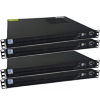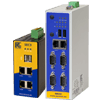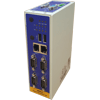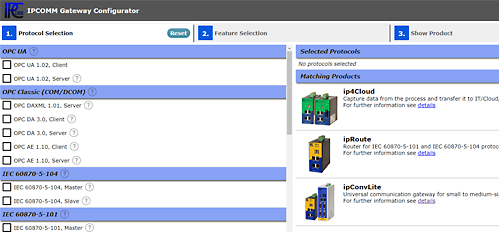IEC 60870-5-103
| 7 | Application Layer | IEC 60870-5-103 IEC 60870-5-5, IEC 60870-5-4 |
| 6 | Presentation Layer | n/a |
| 5 | Session Layer | n/a |
| 4 | Transport Layer | n/a |
| 3 | Network Layer | n/a |
| 2 | Link Layer | unbalanced IEC 60870-5-2 IEC 60870-5-1 (FT 1.2) |
| 1 | Physical Layer | EIA RS485, RS232 (V.24), Fibre Optics |
- Double Command
- Double indication [2 bit] with quality and time tag
- Double indication [2 bit] with quality, time tag and relative time
- Measured normalized value with quality
- Measured floating point value with quality, time tag and relative time
- Single indication [1 Bit]
- Double indication [2 bit]
- ASCII 8-bit code
- Measured scaled value
- Measured floating point value
- Single indication [1 Bit]
- Double indication [2 bit]
- ASCII 8-bit code
- Measured scaled value
- Measured floating point value
Physical Layer
PCM, half-duplex
Link Layer
Party line or point to point
Application Layer
On-demand transmission (e. g. double indications, analogs, ...)
Spontaneous transmission (e. g. double indications with time tag, ...)
Command execution
Clock synchronizationAddress Space
Link address: 0..255
Common Address of ASDU: 1..255
Function Type: 0..253
Information number: 0..255
-

ipConvOPC
Windows software package for universal conversion between diverse standard protocols
-
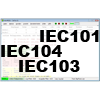
Fink WinPP Protocol Simulator
Simulationsoftware for IEC 60870-5-101, IEC 60870-5-102, IEC 60870-5-103, IEC 60870-5-104, SINAUT 8-FW 16-1024 PCM/DPDM
-
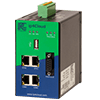
ip4Cloud/SEC3PB
Capture PROFIBUS data by eavesdropping and transmit it to Cloud/IT or SCADA services
-
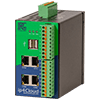
ip4Cloud/SEC3IO
Switch and monitor digital I/O states to transmit them to IT/Cloud/SCADA services
-
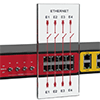
ipELB
4-Port Ethernet Line Breaker with relay controlled Ethernet ports and integrated I/O module
